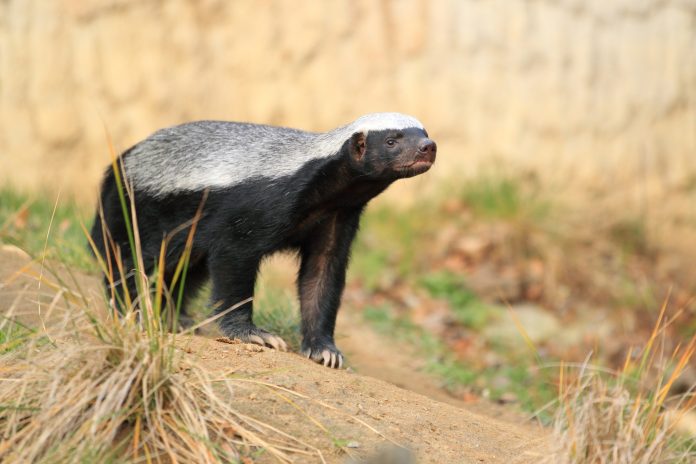New research reports on the discovery of a 5-million-year-old relative of the living honey badger from West Coast of South Africa
New research published in the Journal of Vertebrate Paleontology by palaeontologists Alberto Valenciano Vaquero from Iziko Museums of South Africa, the University of Cape Town, University of Zaragoza and Romala Govender from Iziko Museums of South Africa, Research and Exhibition, report on the discovery of a relative of the living honey badger from the early Pliocene locality of Langebaanweg (West Coast Fossil Park, South Africa).
Living honey badger (also known as ratel) (Mellivora capensis) belong to the mustelid family which includes weasels, otters and badgers. They live in most of sub-Saharan Africa and East Asia and despite its relatively small size of 9-14 kg, they are one of the most aggressive and fierce animals in the world.
“Even large carnivores, such as leopards, hyenas, and lions stay out of their way” says Valenciano, lead author of this research.
“The new honey badger fossils we describe triple the number of known fossils and gives us a unique glimpse into its lifestyle and relationship to other similar mustelids. These new fossils demonstrate that this South African species is distinct from the late Miocene forms from Central Africa (Howellictis) and East Africa (Erokomellivora), as well as from the extant honey badger” added Valenciano.
Eomellivorini
The research confirms the existence of a unique group of mustelids named Eomellivorini. Although the ratel represents the single living member of its subfamily of mustelids, they were much more diverse in the past.
Valenciano and Govender suggest the existence of two distinct groups of mustelids: the mellivorini (comprising the living ratel, the one from Langebaanweg and several others ratel-like relatives), as well as the Eomellivorini which are characterized by gigantic proportions.
Prof. Lars Werdelin (Swedish Museum of Natural History), a leading expert on carnivores, commented: “Identification of the Eomellivorini, which include Eomellivora (from the northern continents) and Ekorus (from Africa), identifies a group of giant mustelids related to the living ratel that were adapted for pursuit unlike any mustelids seen today, and may have evolved at a time when cats of this size were rare or non-existent.”
Dr. Govender, UCT Palaeontologist Anusuya Chinsamy-Turan, said: “The Langebaanweg fossils are at a crossroads of climate and environmental change giving us insight into how animals adapted to these changes as well as insight into carnivore evolution in southern Africa. This is an incredible discovery! Can you imagine, if it were not for the fossils at Langebaanweg we would have absolutely no idea of the rich biodiversity that once existed along the West Coast of South Africa.”











